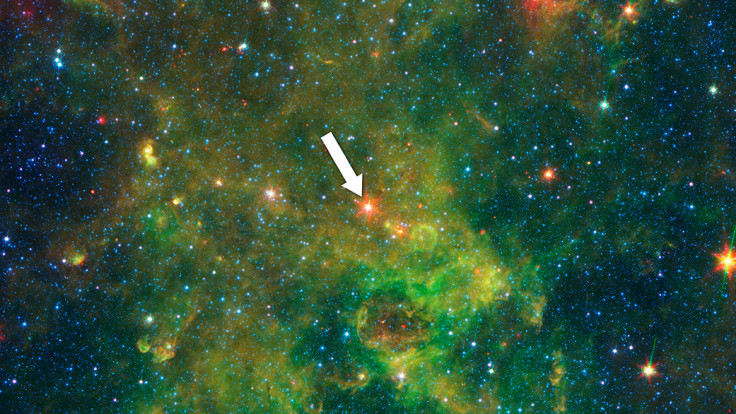The strange 'age-defying' star that appears to be both very young and very old
The object, which lies 12,000 light years from Earth, has perplexed astronomers for years

In the depths of the Milky Way, 12,000 light years from Earth, lies a peculiar star which has perplexed astronomers for years because it displays characteristics of being extremely old and extremely young simultaneously.
The star was initially classified as a red supergiant – an elderly star, nearing the end of its life cycle. However, a new study conducted by researchers at NASA, suggests that, in fact, the object could be a protostar – a young star which has yet to fully form.
"Astronomers recognised this object as noteworthy around the year 2000 and have been trying ever since to decide how far along its development is," said Martin Cordiner, a NASA astrochemist and lead author of the paper, published in the Astrophysical Journal.
When astronomers became aware of the peculiarity of the object, various teams concluded that it was an oxygen-rich star, 10 times larger than the Sun. The question for researchers though was what kind of star was it exactly?
Some argued that it was nearing the end of its life cycle because astronomers had detected the presence of intense radio sources – called masers. The exact type of masers that had been detected were almost exclusively associated with old stars.
However, there were other signs that did not fit with what scientists observe in old stars. For example, a large cloud of chemical-rich material surrounding the star was identified. These are usually found in regions of space where new stars are born.
Some scientists suggested that the object could be an old star surrounded by an unexpected cloud of gas. Others posited that, in fact, two objects were being observed in the same field – a very old star and a cloud of material where new stars are born.
To try and unlock the mysteries of the object, Cordiner and his team conducted observations using the European Space Agency's Herschel Space Observatory, as well as analysing further data, gathered by NASA's Spitzer Space Telescope. Both of these telescopes operate at infrared wavelengths, giving the team new insights into the material surrounding the star.
The new information led Cordiner and his team to think that the star was actually in its very early stages of formation. They found that the object is much brighter than it first appeared, emitting about 20,000 times the energy of our sun. They also found that the dense cloud of material around the star appears to be collapsing, a situation which can occur when a young star pulls in material to feed its growth.
In addition, the cloud is estimated to be 500 to 700 solar masses, far more than what could have been produced by a dying star. Further supporting the young star theory, the team detected two narrowly focused jets of fast-moving gas shooting out of both poles at incredibly fast speeds, a common characteristic of protostars.
"We think the star is probably in an embryonic stage, getting near the end of its accretion stage – the period when it pulls in new material to fuel its growth," said Cordiner.
However, the researchers acknowledge that the object is not a typical protostar, because it still displays characteristics of being very old.
"No matter how one looks at this object, it's fascinating, and it has something new to tell us about the life cycles of stars," said Steven Charnley, a co-author of the paper.
© Copyright IBTimes 2025. All rights reserved.





















